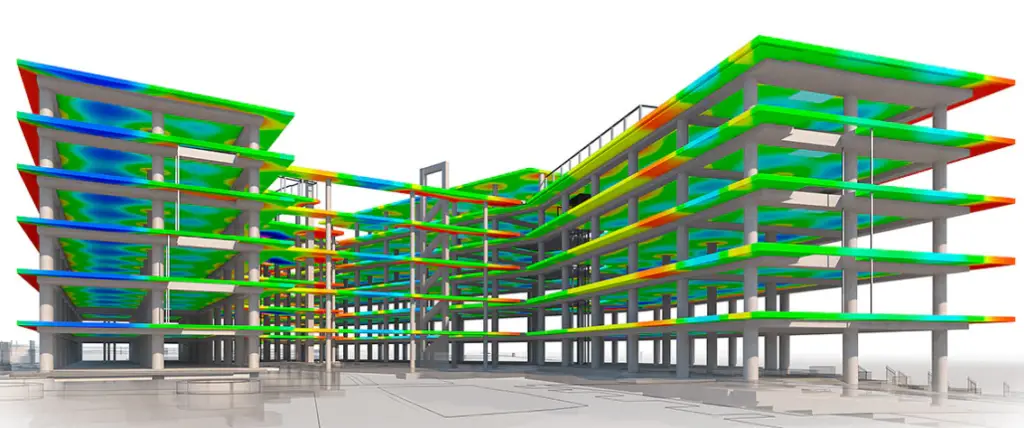Structural engineering is a field of civil engineering that is concerned with the analysis and design of structures and infrastructures such as buildings, bridges, retaining walls, water-retaining structures, towers, masts, etc. By implication, structural engineers are responsible for the design of structures and infrastructures that serve the benefit of mankind.
A structural engineer uses the principles of mathematics and applied physics to develop solutions that will guarantee the safety and stability of structures in the most economical way. A structure is commonly defined as a system of connected parts designed to resist loads.
In buildings, while an architect is concerned with aesthetics and optimal arrangement of spaces and fenestrations, a structural engineer is concerned with the safety, stability, and integrity of the building. In other words, his commitment is to ensure that the building will safely withstand all loads without collapsing in part or in whole.

The expertise and skills of a structural engineer require that they should be able to provide leadership, innovation, supervision, and adequate technical skills that will ensure that their designs are built according to their details and specifications. A professional structural engineer should be in touch with the real world, and be current with the latest industry innovations in materials, codes of practice, requirements, and government policies and legislations.
Where do structural engineers work?
Structural engineers are found in diverse fields of endeavour such as in academia as tutors and researchers, independent practitioners (self-employed consultants), construction companies, consultancy firms, government agencies and ministries, oil and gas industries, maritime and logistics, etc. Their roles are often interwoven between design and supervision. They also represent the interests of their employers by checking or reviewing the designs done by other engineers, before granting approval.

During the design and construction of buildings and other municipal infrastructures, a structural engineer works closely with architects, town planners, geotechnical engineers, surveyors, and MEP engineers.
Becoming a structural engineer
In the modern world, it is impossible to become a structural engineer by trade. The art and science of structural engineering are fairly technical in that it requires a dedicated university degree, and adequate professional training before someone can be considered a structural engineer.
Most structural engineers have civil engineering as their first degree, and most of them go ahead to obtain a Master’s degree or PhD in structural engineering. However, in some countries or universities, it is possible to study structural engineering as a first-degree course. It is important to note that having a first degree in engineering does not make one a professional engineer, but a registrable engineer. Graduate engineers are often required to practice for about four years before applying to become professional engineers.
To become professional, it is expected that an engineering graduate registers, and passes all professional exams and interviews in order to be recognised as a professional. Some of the professional bodies for civil engineers are the Institution of Civil Engineers (ICE), the Institution of Structural Engineers (IStructE), etc. The person is also expected to fulfil the requirements of the state or country where they practice engineering in order to be licenced.
Typical Structural Engineering Courses
Some of the core courses that make up structural engineering in universities are:
- Engineering Mathematics
- Engineering Mechanics: Statics
- Engineering Mechanics: Dynamics
- Strength of Materials
- Theory of structures (Structural Analysis)
- Design of reinforced concrete structures
- Design of steel structures
- Design of timber structures
- Structural detailing
- Matrix analysis of structures
- Civil Engineering Materials
- Dynamics of structures
- Foundation/Soil Engineering
These courses are usually adequate for the technical knowledge required of a structural engineer at the undergraduate level.
At the post-graduate level, the following courses are usually treated in deeper detail, even though they are introduced at the undergraduate level:
- Advanced Design of Structures
- Advanced Structural Analysis
- Bridge design
- Theory of plates and shells
- Stability of structures
- Computational/Variational Structural mechanics
- Dynamics of structures and earthquake engineering
- Plastic and non-linear analysis of structures
- Fire Engineering
- Sustainable design etc
However, the type and number of courses offered at the postgraduate level vary from institution to institution. Sometimes, the courses are pushed towards the research interests of the Department.
The Practice of Structural Engineering
Armed with the knowledge from these courses and adequate field experience, a structural engineer is able to assess the loads expected to act on a structure, the effects of the load on the structure, and provide adequate members and details to withstand the load. A structure is expected to perform satisfactorily throughout its design life without undergoing excessive deflection, vibration, cracking, or final failure.
A modern structural engineer is expected to have very good computer skills, and the use of CAD software such as AUTOCAD is almost inevitable these days. Furthermore, the use of spreadsheets, structural design software, and 3D modelling software also come in handy. However, all structural engineers should be able to perform very quick checks and calculations using pen and paper.

The communication skills (written and oral) of a structural engineer should be top-notch, with a touch of class. This is because more often than not, structural engineers write reports and evaluations. He/she should also have very good people skills and adequate knowledge of the economy and politics, as feedback and site inspections are part of the job. A structural engineer should be able to provide objective information and feedback that resonates with real-world experience.
A structural engineer is people-oriented, and the safety of the public and end-users of his/her design tops the list of priorities. At the same time, he/she tries to ensure that the solutions proposed are not unreasonably expensive. Careful attention is also paid to the beauty and harmony of the final output.
A structural engineer is a good planner who knows that there are implications to every decision made during any design. So when next you come across a structural engineer, ask for his/her favourite drink, and get it for him/her right away.











I like that you pointed out how a structural engineer is a good planner who knows that there are implications to every decision made during any design. I was watching a video of a construction project last night and it showed how the role of structural engineers works. It seems very important, so I could see why they are needed for various construction projects now.